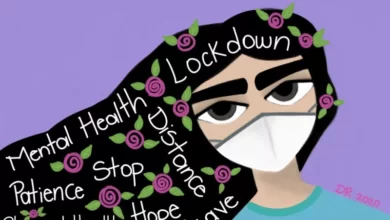The Impact of Teacher Burnout on Student Learning and Strategies for Prevention

Teacher burnout is a growing concern in the education sector, with significant implications for student learning and overall academic outcomes. As educators face mounting pressures and challenges, their well-being is crucial in ensuring an optimal learning environment. This article delves into the impact of teacher burnout on student learning, explores the contributing factors, and provides strategies for prevention.
Introduction
In today’s educational landscape, teacher burnout has become a prevalent issue that demands attention. It refers to a state of chronic physical and emotional exhaustion, often accompanied by feelings of cynicism and detachment from work. Teacher well-being is essential, as it directly influences the quality of instruction and students’ academic success.
Understanding the Impact of Teacher Burnout
Teacher burnout negatively affects student learning outcomes in various ways. Firstly, burnt-out teachers may experience reduced motivation and engagement, which can diminish their ability to provide effective instruction. Additionally, burnout can hinder educators’ capacity to establish positive relationships with students, negatively impacting classroom dynamics and student engagement levels.
Moreover, teacher burnout can manifest as a decline in the quality of assessments, feedback, and instructional practices. When teachers are exhausted and overwhelmed, they may struggle to deliver instruction effectively, resulting in diminished student learning and academic progress.
Factors Contributing to Teacher Burnout
Several factors contribute to the development of teacher burnout. One primary factor is the heavy workload and time pressure faced by educators. The constant demand for lesson planning, grading, and administrative tasks can be overwhelming, leaving teachers with little time for self-care and personal rejuvenation.
Additionally, the lack of administrative support is another significant contributor to burnout. When teachers perceive a lack of recognition, inadequate resources, or insufficient guidance from school leadership, it adds to their stress levels and diminishes their job satisfaction.
Furthermore, emotional exhaustion and stress are common components of burnout. Educators often deal with challenging classroom situations, student behavior issues, and the emotional needs of their students. Over time, these factors can drain teachers’ emotional resources, leading to burnout.
Strategies for Preventing Teacher Burnout
Addressing teacher burnout requires a proactive and multifaceted approach. To prevent burnout and promote teacher well-being, it is crucial to prioritize self-care and work-life balance. Encouraging teachers to engage in activities that rejuvenate them, such as exercise, hobbies, or spending quality time with loved ones can significantly contribute to their overall well-being and resilience in the face of daily challenges.
Another effective strategy for preventing teacher burnout is providing ongoing professional development and support. By offering opportunities for teachers to enhance their skills, learn new instructional techniques, and stay updated with educational trends, schools can empower educators and increase their confidence and job satisfaction. Professional development can also help teachers find innovative ways to manage their workload effectively and improve classroom practices, reducing stress and burnout.
Creating a positive school culture is also essential in preventing teacher burnout. School leaders can foster a supportive environment by encouraging collaboration, teamwork, and open communication among staff members. Recognizing and appreciating the efforts and accomplishments of teachers can go a long way in boosting their morale and job satisfaction. Moreover, implementing policies that prioritize work-life balance, such as flexible scheduling and reasonable work expectations, can help alleviate stress and prevent burnout.
The Role of School Leaders in Addressing Teacher Burnout
School leaders play a crucial role in addressing and preventing teacher burnout. They have the power to create supportive work environments that prioritize teacher well-being. By fostering a culture of open communication and feedback, school leaders can ensure that teachers feel heard, valued, and supported. They can provide opportunities for teachers to voice their concerns, share ideas, and collaborate with colleagues, creating a sense of community and reducing feelings of isolation.
Furthermore, school leaders can implement policies and practices that promote work-life balance and minimize excessive workload. They can advocate for reasonable expectations and allocate resources to support teachers in their professional growth and development. By investing in their teachers’ well-being, school leaders can create a positive ripple effect that enhances the overall learning environment and student outcomes.
Importance of Teacher Burnout Prevention for Student Learning
Addressing teacher burnout is not only crucial for teachers’ well-being but also for the overall success and achievement of students. When teachers are emotionally and physically exhausted, it becomes challenging for them to create engaging and dynamic learning experiences for their students. Burnout can lead to decreased instructional effectiveness, reduced motivation, and limited capacity to meet students’ individual needs.
On the other hand, when teachers are supported, energized, and motivated, they can provide a nurturing and stimulating learning environment. Teachers who are emotionally and mentally well can effectively manage classroom dynamics, establish positive relationships with students, and tailor instruction to meet diverse learning styles. This, in turn, promotes student engagement, academic achievement, and positive social-emotional development.



